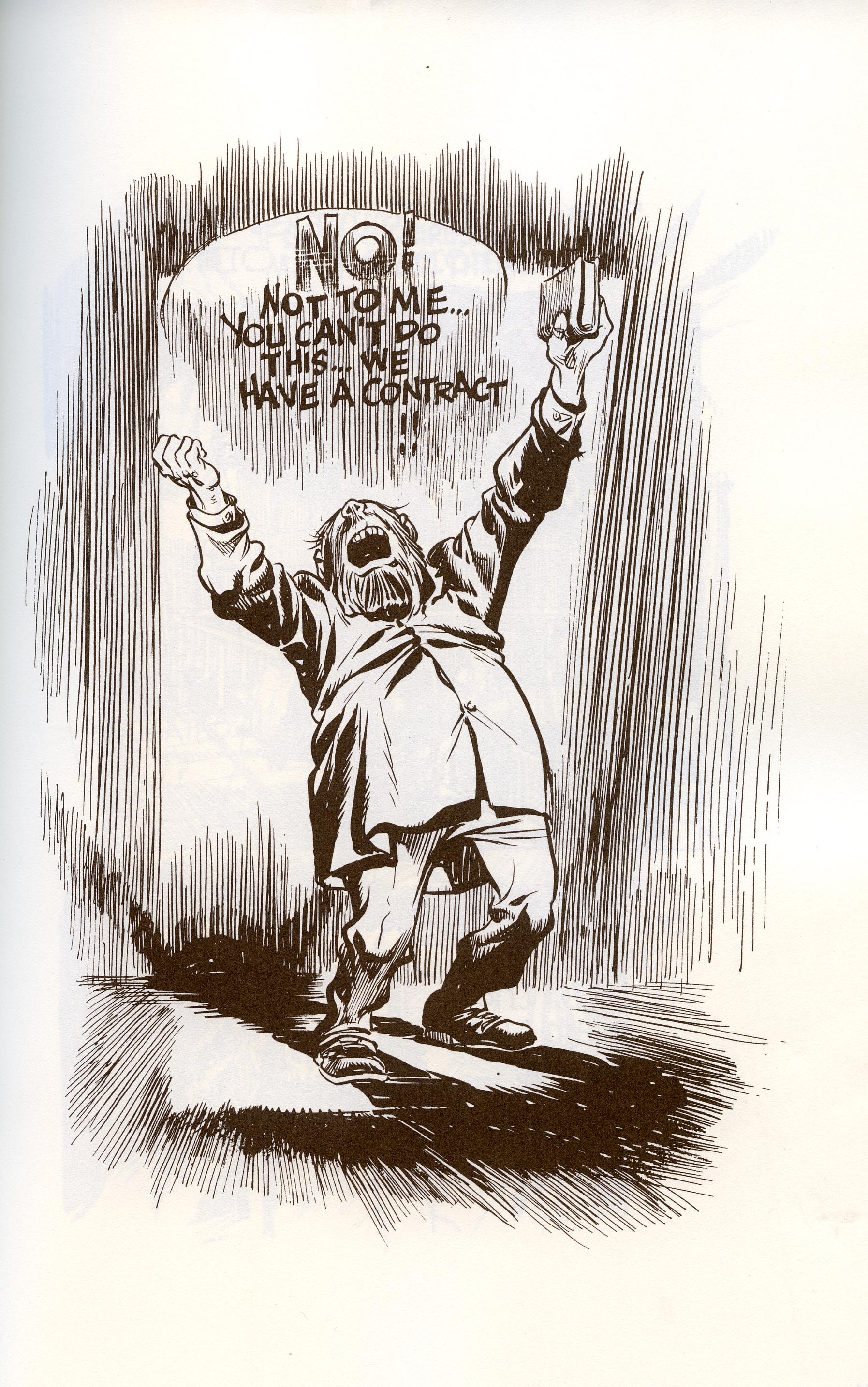Will Eisner’s body of work helped legitimize the graphic novel as a relevant form of story telling and books like “Contract with God” show prove exactly why. The novel tells many short stories about people’s lives in neighborhood in the Bronx. Most of the characters are either miserable, vile, aggressive, or disgusting. There are no heroes in this book, just regular people dealing with life and their own personal demons. The subject matter alone sets this novel a part from traditional comic books but Eisner also pushes the boundaries of what comic book art can be. He illustrates only what is needed, sometimes only hinting at a background. There are very rarely any actual panels. He instead plays around with the organization of each image depending on what would best tell the story. For example, on the page where Hersh angryily tries to reason with God and suffers a heart attack, the panels are tilted as if they are coming undone. The heart attack panels are diagonal and overlapping one another which really builds the tension and represents that something is clearly not right. Some pages are just a full illustration and the format feels more like a political cartoon than a comic book.
Eisner also uses
font to tell the story. The letters on the page change size and style depending
on what is being said. It makes the pages feel more alive. The words are just
as involved in telling the story as the images are. The characters are also
incredibly expressive. While the subject matter is very mature, the characters
are still rather cartoony. And of course as Scott McCloud professes, it’s easier to relate to images of
people who are more simplified than those that are extremely specific and detailed.
I’m sure Will Eisner was very keen on this fact and used it to his advantage.

No comments:
Post a Comment